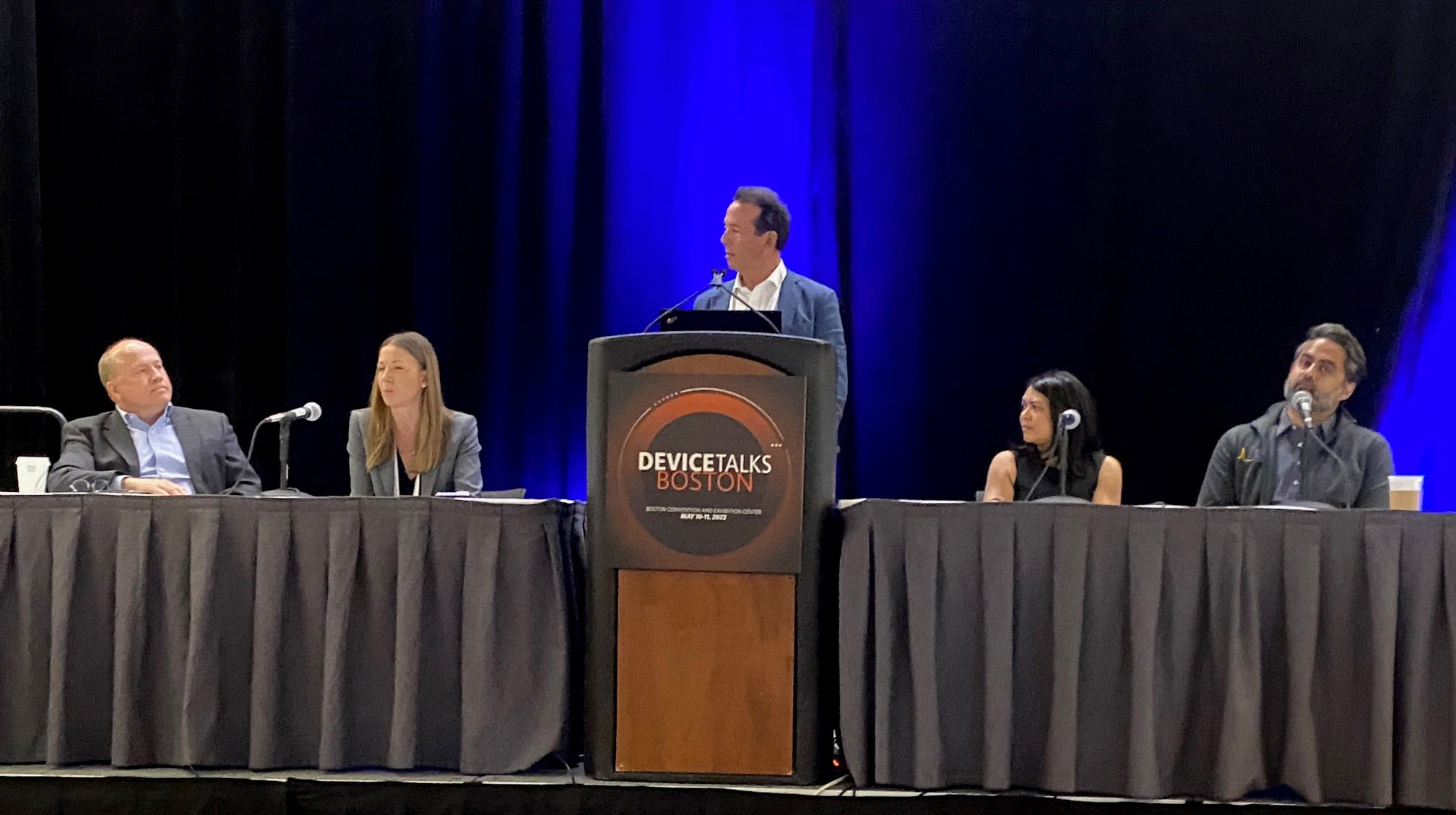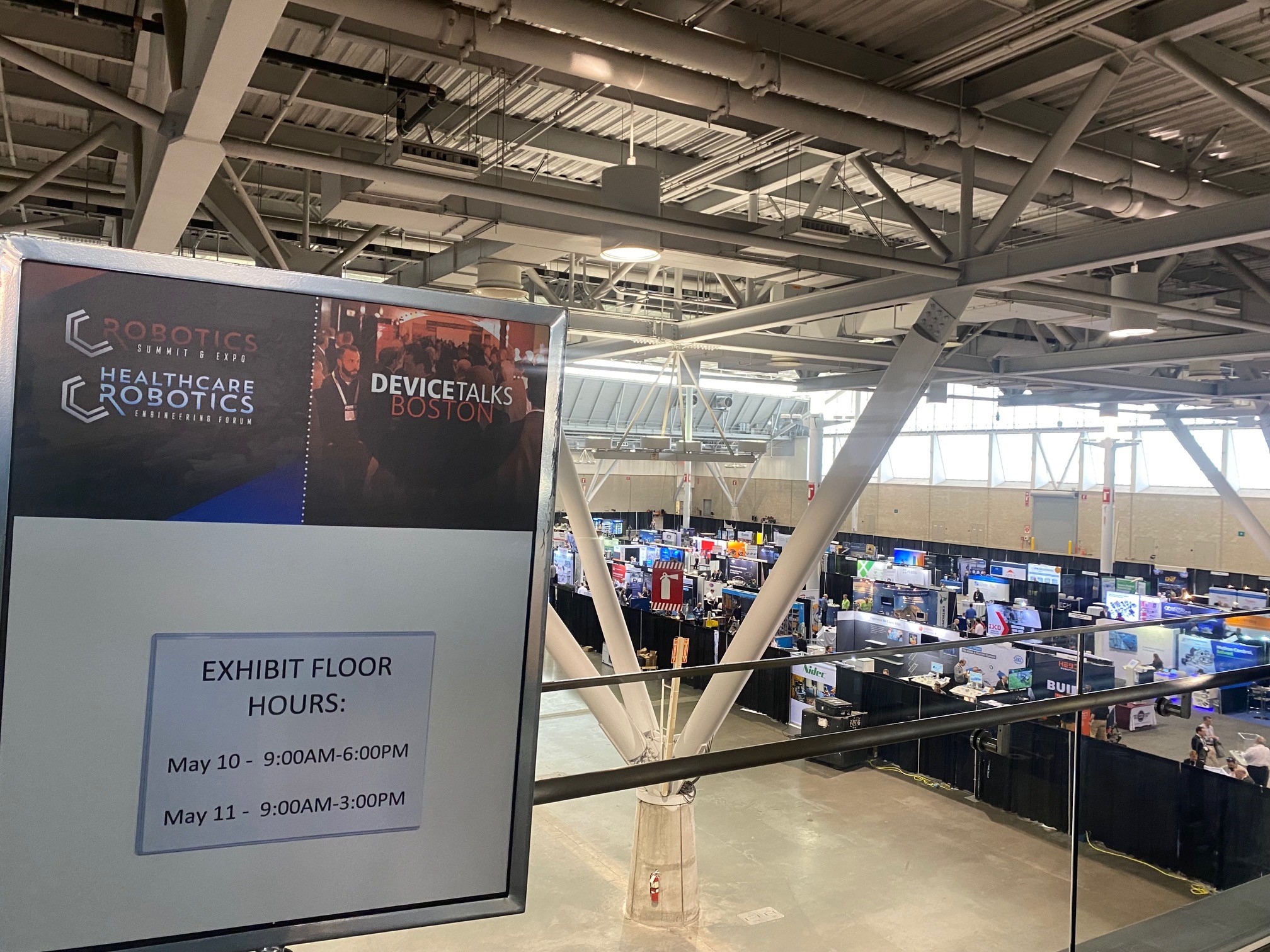
Speakers at DeviceTalks Boston set the stage for massive innovations poised to transform med-tech — and acknowledged the role that the COVID-19 pandemic has played in ushering in that change.
“One thing that COVID has done is it has accelerated that adoption of technology,” said Rajit Kamal, worldwide president of sports medicine/shoulder reconstruction at DePuy Synthes, the orthopedics company of Johnson & Johnson. “The potential for that in healthcare is very exciting.”
Every surgeon now uses technology, whereas prior to the pandemic, that was not the case, he added.
Artificial Intelligence, supply chains, robotics, and the role of clinical feedback to advance innovation and change the landscape highlighted the first day of DeviceTalks’ agenda, along with the overarching impact of the global pandemic on healthcare.
The event — taking place at the Boston Convention and Exhibition Center on May 10-11 — is co-located with the Healthcare Robotics Engineering Forum and the Robotics Summit and Expo. Organizers expect about 2,900 attendees this year.

Single-use endoscopy will take center stage May 11, the second day of the event, in a panel entitled: “How New Design and Clinical Demand Created the Booming Single-Use Endoscopy Market.”
Wes Scruggs, vice president corporate accounts at Ambu, and Dr. Kapil Gupta, a Boston Scientific Corp. senior medical affairs director for endoscopy, are slated to discuss how new designs and clinical demand have converged to create a single-use endoscope market.
Supply chain challenges dominated many conference conversations on the conference’s first day, particularly forecasting. Boston Scientific, for example, moved from a centralized supply chain organization to a regional one once the pandemic took hold, due to the wide variations in availability of supplies around the globe, according to Paudie O’Connor, senior vice president of global supply chain.
In his keynote address, Frank J. Doyle III, dean of Harvard’s John A. Paulson School of Engineering and Applied Sciences, explained how Harvard University, long known as a siloed institution, is reinventing itself as a place for collaboration to train next-generation entrepreneurial skills.
PhDs and post-docs are hungry to learn the strategies and skills needed to bring what happens in labs and on white boards into the real world.
One new area of focus for Harvard is neuroscience, in the form of its just launched Kempner Institute, which is dedicated to the study of natural and artificial intelligence. Its goal is to train future generations of researchers to study intelligence from biological, cognitive, engineering, and computational perspectives.
In a separate panel, DePuy Synthes Sports education strategy executive Therese Kelley described scrub nurses using virtual reality training to practice procedures, improving their knowledge and confidence while reducing operative time — and anxiety. Modules are created and shipped around the world in headsets.
“Education now is all about a personal journey,” she said. “We’ve been able to train thousands of people at their choice of time and in a space that’s comfortable for them.
Anita Barnick, vice president of research and development at Mitek Sports Medicine and Shoulder Reconstruction, said her company’s goal is to harness the power of data and analytics to best help patients.
“We need to use technology to be quickly iterative,” she said. “It goes back to what are the fundamental needs of our patients and the surgeons who are trying to serve our patients.”


